Can Chicken Eat Microgreens? Discover the Advantage
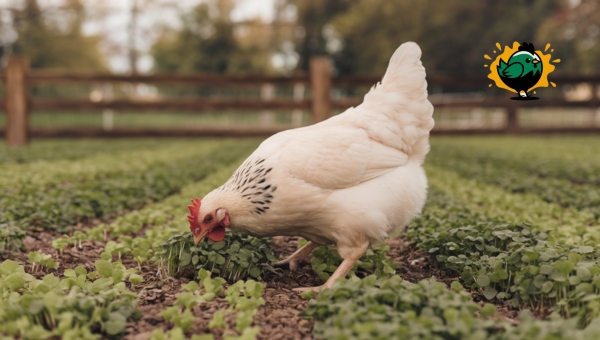
Imagine your backyard, filled with clucking chickens, scratching the ground for tasty treats. Now, picture adding a superfood to their diet, enhancing their health and vitality. That’s where microgreens come in. But can chicken eat microgreens? The answer is a resounding yes.
These tiny greens are packed with nutrients that your chickens will love and benefit from. In this article, we’ll explore the types of microgreens that are safe for chickens, their nutritional benefits, and how to introduce them into their diet. So, if you’re eager to boost your flock’s nutrition, you’re in the right place.
Understanding Microgreens
Microgreens are small, young plants typically harvested just after the first leaves develop. These miniature greens are grown from a variety of seeds, including vegetables, herbs, and grains. Unlike sprouts, they are cultivated in soil or a soil substitute and are exposed to sunlight, allowing them to develop leaves.
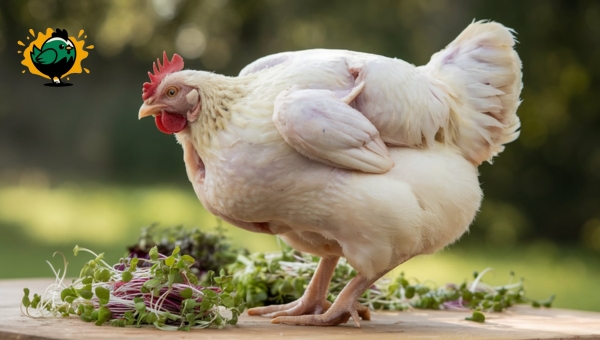
This growth method contributes to their vibrant color and rich flavor. Microgreens are known for their high nutrient content, often containing higher vitamin and antioxidant levels than their mature counterparts.
They are versatile and can be easily grown indoors, making them accessible year-round. Due to their concentrated nutrients, microgreens are a popular addition to many diets.
Nutritional Benefits of Microgreens for Chickens
Microgreens are tiny, edible plants that pack a punch of nutrition, making them a great addition to a chicken’s diet.
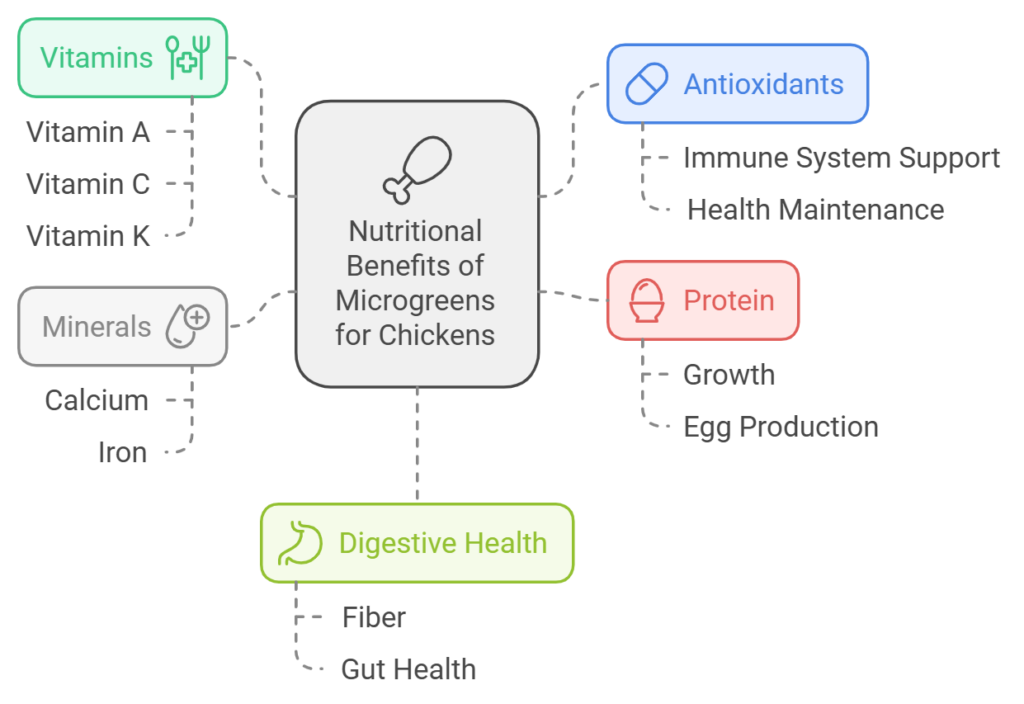
Here are some benefits:
- Rich in Vitamins: Microgreens are loaded with essential vitamins such as A, C, and K, which support the overall health of chickens.
- High in Antioxidants: These small greens contain antioxidants that help boost the immune system, keeping chickens healthy.
- Protein Source: Certain microgreens provide a good amount of protein, which is crucial for growth and egg production.
- Mineral Content: They are also a good source of minerals like calcium and iron, which are vital for bone strength and blood health.
- Digestive Health: The fiber in microgreens aids digestion, promoting gut health in chickens.
Incorporating microgreens into a chicken’s diet can enhance their nutritional intake significantly.
Also Read: Can Chickens Eat Carrots? Discover the Surprising Truth!
Types of Microgreens Safe for Chickens
When considering microgreens for your chickens, it’s important to pick varieties that are both safe and beneficial. These tiny greens can be a great addition to a chicken’s diet, providing essential nutrients and variety.
Among the many options, sunflower microgreens and pea shoots stand out as excellent choices. Let’s explore how these can be incorporated safely into your chicken’s diet.
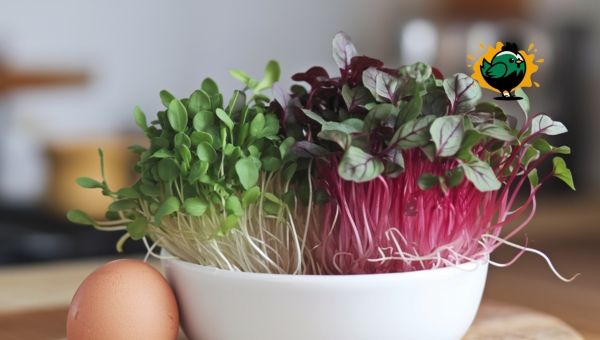
Sunflower Microgreens
Sunflower microgreens are a nutritious option for chickens. They are rich in vitamins and minerals, making them a healthy addition to any chicken’s meal plan. To safely incorporate sunflower microgreens, start by mixing a small amount with their usual feed.
Gradually increase the amount over a week, ensuring chickens adapt well. This method helps chickens get acquainted with the new taste and texture.
Pea Shoots
Pea shoots are another excellent choice for chickens. They offer several benefits:
- High in Nutrients: Rich in vitamins A, C, and K, supporting overall health.
- Safe to Eat: Gentle on the digestive system, making them easy for chickens to digest.
- Enhances Diet Variety: Adds diversity to the chicken’s diet, preventing boredom.
When feeding pea shoots, begin with small portions and monitor your chickens for any adverse reactions. Gradual introduction helps maintain a balanced diet and ensures safety.
Risks and Considerations
When adding microgreens to a chicken’s diet, it’s important to be aware of certain risks and considerations. Potential allergies and overfeeding are two key areas to focus on. Being informed and cautious can ensure a healthy diet for your feathered friends.
Potential Allergies
- Identify Allergies: Just like humans, chickens can have allergies. Some microgreens might trigger these.
- Monitor Reactions: After introducing a new microgreen, watch your chickens for any signs of discomfort or unusual behavior.
- Consult a Vet: If you suspect an allergy, it’s wise to seek professional advice to confirm and manage it.
Overfeeding Microgreens
- Balanced Diet: While nutritious, microgreens should only be a part of a chicken’s diet, not the entirety.
- Portion Control: Offer microgreens in moderation to avoid nutritional imbalances.
- Observe Health: Regularly check the overall health of your chickens to ensure their diet is well-rounded and beneficial.
Also Read: How to Clean Chicken Like a Pro? Essential Tips
How to Introduce Microgreens to Your Chicken’s Diet?
When adding microgreens to your chicken’s diet, it’s important to do so carefully to ensure their health and well-being. Starting with small amounts can help chickens adjust to this new addition.
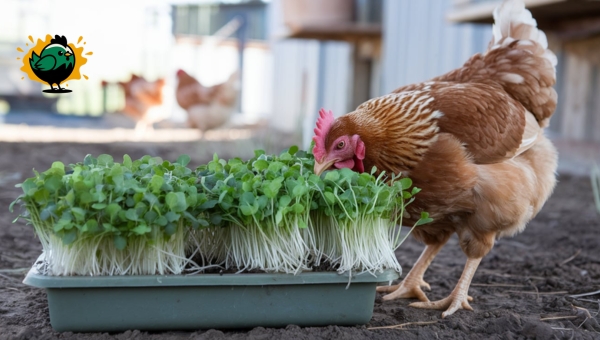
As with any dietary change, monitoring their reaction is key. Let’s explore some methods for a smooth introduction of microgreens into their diet.
Gradual Introduction Methods
- Start Small: Begin with a small handful of microgreens mixed with their regular feed. This allows chickens to get used to the new flavor and texture without overwhelming them.
- Observe and Adjust: Keep an eye on your chickens for any changes in behavior or digestion. If they show positive signs, gradually increase the quantity over a few weeks.
- Mix Varieties: Introduce different types of microgreens gradually. This not only adds variety but also ensures a balanced intake of nutrients.
- Consistency is Key: Offer microgreens consistently, but not as the main food source. This helps chickens adapt to the change while still receiving essential nutrients from their primary diet.
Conclusion
Chickens can indeed benefit from the addition of microgreens to their diet. These nutrient-packed greens offer a range of health benefits, supporting their overall well-being. However, as with any dietary change, it is crucial to introduce microgreens gradually and monitor your flock for any adverse reactions.
Ensuring a balanced diet will keep your chickens healthy and thriving. Understanding the types of microgreens that are safe and beneficial will help in making informed feeding choices. By incorporating microgreens responsibly, you can enhance your chickens’ nutrition naturally.
If you found this information helpful, explore more insightful articles on our site to learn about optimizing your chicken care routine!
